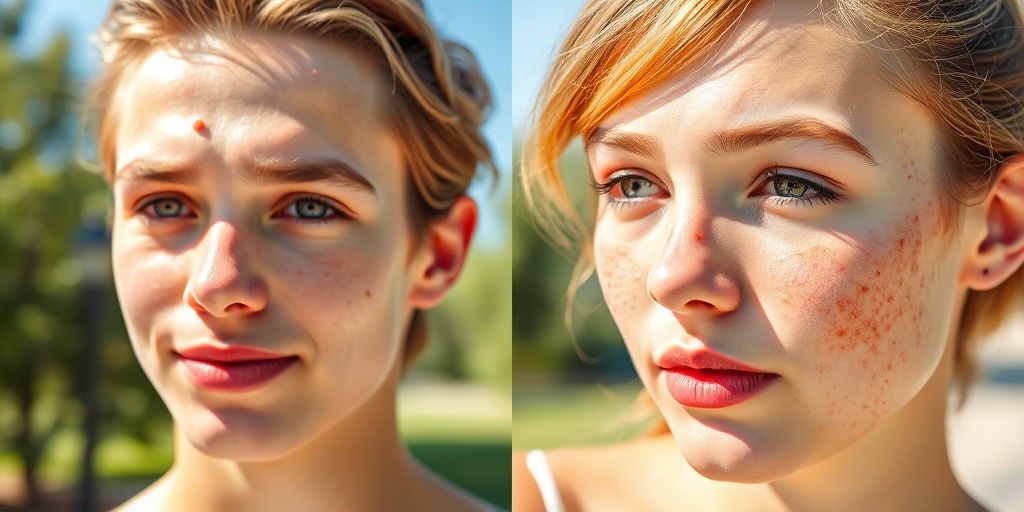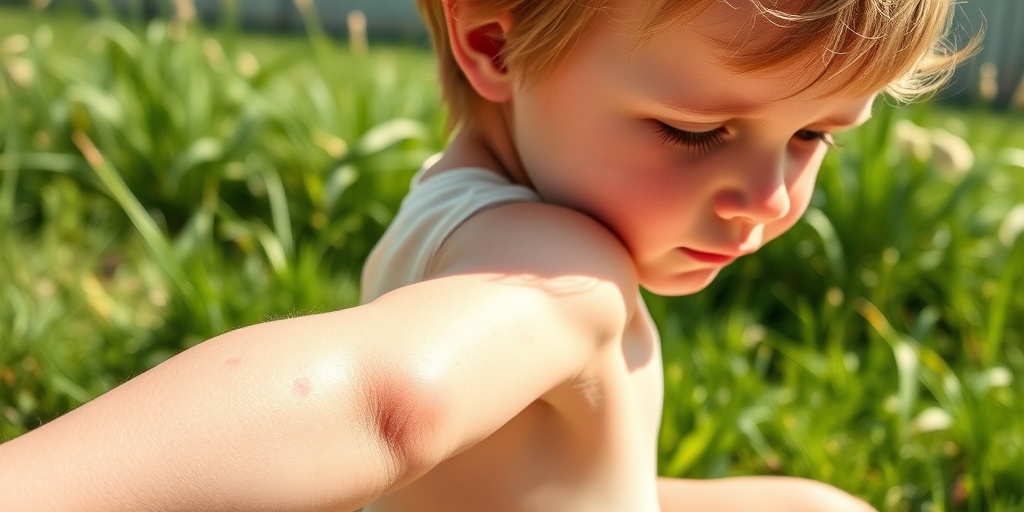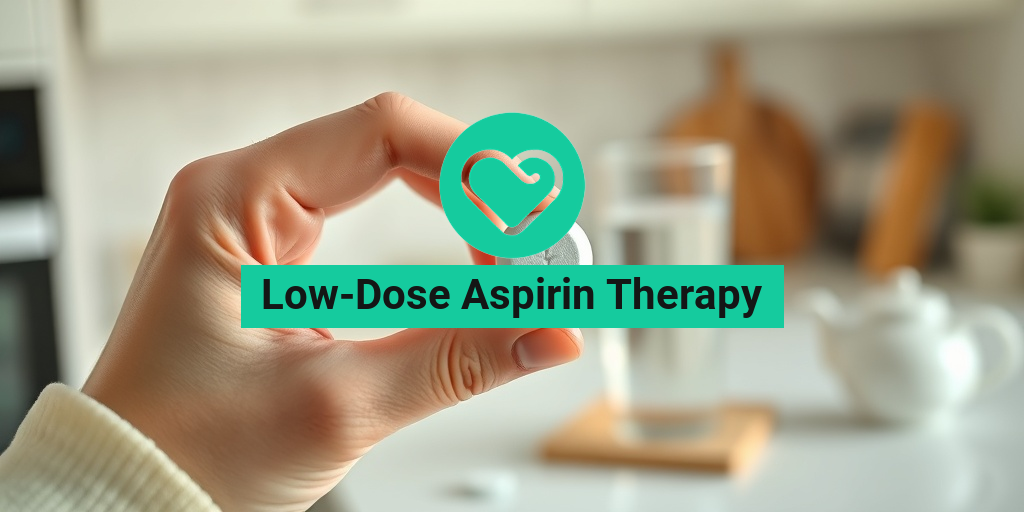What Are Summer Skin Hazards?
As the sun shines brighter and temperatures rise, our skin faces unique challenges during the summer months. Summer skin hazards refer to a variety of skin issues that can arise due to increased sun exposure, humidity, and other environmental factors. Understanding these hazards is crucial for maintaining healthy skin and preventing long-term damage.
During summer, our skin is more susceptible to conditions such as sunburn, heat rash, and even allergic reactions. The combination of UV rays, sweat, and outdoor activities can lead to a range of problems that not only affect our appearance but also our overall skin health. Let’s dive deeper into the common skin issues that many people experience during this season.
Common Skin Issues in Summer
Summer brings a host of skin problems that can affect anyone, from children to adults. Here are some of the most prevalent summer skin problems you should be aware of:
1. Sunburn
One of the most common summer skin hazards is sunburn. Prolonged exposure to UV rays can damage the skin, leading to redness, pain, and peeling. It’s essential to apply a broad-spectrum sunscreen with at least SPF 30, even on cloudy days, to protect your skin from harmful rays. Remember to reapply every two hours, especially after swimming or sweating! ☀️
2. Heat Rash
Heat rash, also known as prickly heat, occurs when sweat gets trapped in the skin’s pores. This condition is particularly common in hot and humid weather, leading to small red bumps and itching. To prevent heat rash, wear loose-fitting clothing and stay in cool, shaded areas whenever possible.
3. Allergic Reactions
Summer activities often expose us to various allergens, such as pollen, insect bites, and certain plants like poison ivy. These allergens can trigger skin reactions, resulting in rashes, hives, or even eczema flare-ups. If you know you’re prone to allergies, consider taking preventive measures, such as using antihistamines or avoiding known triggers.
4. Dry Skin
While summer is often associated with humidity, many people experience dry skin due to sun exposure and swimming in chlorinated pools. To combat dryness, use a hydrating moisturizer daily and drink plenty of water to keep your skin hydrated from the inside out. Look for moisturizers that contain ingredients like hyaluronic acid or glycerin for optimal hydration.
5. Fungal Infections
Warm and humid conditions create an ideal environment for fungal infections, such as athlete’s foot or ringworm. These infections can thrive in damp areas, so it’s crucial to keep your skin dry and wear breathable footwear. If you notice any unusual rashes or persistent itching, consult a healthcare professional for appropriate treatment.
6. Acne Breakouts
Increased sweating and oil production during the summer can lead to clogged pores and acne breakouts. To manage summer acne, use non-comedogenic skincare products and cleanse your face regularly to remove excess oil and sweat. Incorporating salicylic acid or benzoyl peroxide into your skincare routine can also help keep breakouts at bay.
7. Skin Cancer
Perhaps the most serious of all summer skin hazards is the risk of skin cancer. Prolonged exposure to UV rays can lead to various forms of skin cancer, including melanoma. Regular skin checks and early detection are vital. If you notice any changes in your skin, such as new moles or changes in existing moles, consult a dermatologist immediately.
Protecting Your Skin This Summer
To enjoy the summer while keeping your skin healthy, consider these essential tips:
- Use Sunscreen: Always apply sunscreen with at least SPF 30 before heading outdoors.
- Stay Hydrated: Drink plenty of water to keep your skin hydrated.
- Wear Protective Clothing: Opt for lightweight, long-sleeved clothing and wide-brimmed hats.
- Limit Sun Exposure: Try to stay in the shade during peak sun hours (10 AM to 4 PM).
- Moisturize: Use a good moisturizer to combat dryness and maintain skin health.
By being aware of summer skin hazards and taking proactive steps, you can enjoy the sunny season while keeping your skin safe and healthy. For more evidence-based health answers and tips, visit Yesil Health AI. Your skin will thank you! 🌞

Sunburn: Causes and Prevention
As the sun shines brighter and temperatures rise, many of us eagerly embrace the outdoors. However, with this joy comes the risk of sunburn, a common summer skin hazard that can lead to discomfort and long-term skin damage. Understanding the causes and prevention methods is essential for enjoying the sunny days safely.
What Causes Sunburn?
Sunburn occurs when your skin is overexposed to ultraviolet (UV) radiation from the sun. The skin produces melanin, a pigment that provides some protection against UV rays, but excessive exposure can overwhelm this natural defense. Here are the primary causes of sunburn:
- UV Radiation: The sun emits two types of harmful UV rays: UVA and UVB. UVA rays penetrate deeply into the skin and can cause premature aging, while UVB rays are primarily responsible for sunburn.
- Skin Type: Individuals with fair skin, light hair, and light eyes are more susceptible to sunburn due to lower melanin levels.
- Time of Day: The sun’s rays are strongest between 10 a.m. and 4 p.m. Spending extended periods outdoors during these hours increases the risk of sunburn.
- Altitude and Reflection: Higher altitudes and reflective surfaces like water, sand, and snow can intensify UV exposure, leading to a higher chance of sunburn.
How to Prevent Sunburn
Preventing sunburn is crucial for maintaining healthy skin during the summer months. Here are some effective strategies:
- Use Sunscreen: Apply a broad-spectrum sunscreen with an SPF of at least 30, even on cloudy days. Reapply every two hours, or more frequently if swimming or sweating.
- Wear Protective Clothing: Long-sleeved shirts, wide-brimmed hats, and UV-blocking sunglasses can provide additional protection against harmful rays.
- Seek Shade: Whenever possible, stay in the shade, especially during peak sun hours. This simple step can significantly reduce your risk of sunburn.
- Stay Hydrated: Drinking plenty of water helps keep your skin hydrated and can reduce the severity of sunburn if it occurs.
By taking these precautions, you can enjoy the summer sun while minimizing the risk of sunburn and its associated complications. Remember, prevention is always better than cure! ☀️
Heat Rash: Symptoms and Treatment
Another common summer skin hazard is heat rash, also known as prickly heat or miliaria. This condition occurs when sweat ducts become blocked, leading to discomfort and irritation. Understanding the symptoms and treatment options can help you manage heat rash effectively.
Symptoms of Heat Rash
Heat rash typically appears as small, red bumps on the skin, often accompanied by a prickling or stinging sensation. Here are the common symptoms to look out for:
- Red Bumps: Small, raised red spots that may cluster together.
- Itching or Burning: A prickly sensation that can be quite uncomfortable.
- Location: Heat rash commonly occurs in areas where sweat accumulates, such as the neck, armpits, groin, and under the breasts.
Treatment for Heat Rash
While heat rash is usually harmless and resolves on its own, there are several ways to alleviate symptoms and promote healing:
- Cool Compress: Applying a cool, damp cloth to the affected area can help soothe irritation and reduce inflammation.
- Stay Cool: Avoid excessive heat and humidity. Stay indoors in air-conditioned spaces when possible, and wear loose-fitting, breathable clothing.
- Calamine Lotion: Over-the-counter calamine lotion can provide relief from itching and discomfort.
- Hydration: Drink plenty of fluids to help regulate body temperature and prevent excessive sweating.
By recognizing the symptoms of heat rash and implementing these treatment strategies, you can enjoy your summer activities without the discomfort of this common skin condition. 🌞

Insect Bites and Skin Reactions
As the summer sun beckons us outdoors, it also invites a host of pesky insects that can wreak havoc on our skin. Insect bites are not just annoying; they can lead to various skin reactions that may require attention. Understanding these reactions can help you enjoy your summer without the itch! 🦟
Common Insect Bites and Their Effects
Different insects can cause different reactions on your skin. Here are some of the most common offenders:
- Mosquito Bites: These are perhaps the most notorious summer skin problems. Mosquito bites typically result in red, itchy welts that can be quite uncomfortable.
- Bee and Wasp Stings: Unlike mosquito bites, stings from bees and wasps can cause severe allergic reactions in some individuals, leading to swelling, pain, and even anaphylaxis.
- Ticks: Ticks can transmit diseases like Lyme disease. A tick bite may not always be noticeable at first, but it can lead to serious health issues if not treated promptly.
- Ant Bites: Fire ants, in particular, can cause painful, itchy bumps that may blister and become infected if scratched.
Recognizing Skin Reactions
When you get bitten, your body reacts to the insect’s saliva or venom. Here are some common skin reactions to watch for:
- Redness and Swelling: This is a typical response to insect bites, indicating inflammation.
- Itching: The urge to scratch can be overwhelming, but it’s essential to resist to prevent further irritation or infection.
- Blistering: Some bites, especially from fire ants, can lead to blisters that may require medical attention.
Prevention and Treatment
To minimize the risk of insect bites and their associated skin reactions, consider the following tips:
- Use Insect Repellent: Apply a good quality insect repellent containing DEET or picaridin before heading outdoors.
- Wear Protective Clothing: Long sleeves and pants can help shield your skin from bites.
- Keep Your Environment Clean: Remove standing water and maintain your yard to deter insects.
If you do get bitten, here are some treatment options:
- Cold Compress: Applying a cold compress can help reduce swelling and numb the area.
- Over-the-Counter Creams: Hydrocortisone cream or calamine lotion can alleviate itching and inflammation.
- Antihistamines: Oral antihistamines can help control allergic reactions and reduce itching.
Swimmer’s Itch: What to Know
Another common summer skin hazard is swimmer’s itch, a condition caused by parasites found in freshwater lakes and ponds. This condition can put a damper on your summer fun, so it’s essential to know how to recognize and prevent it. 🏊♂️
What is Swimmer’s Itch?
Swimmer’s itch, also known as cercarial dermatitis, occurs when tiny parasites penetrate the skin. These parasites are usually found in water where birds and other animals have been. The result? An itchy, rash-like reaction that can be quite bothersome.
Symptoms of Swimmer’s Itch
Symptoms typically appear within minutes to days after exposure and can include:
- Itchy Rash: The most common symptom, often resembling hives or small red bumps.
- Blisters: In some cases, blisters may form, leading to further discomfort.
- Skin Inflammation: The affected area may become red and swollen.
Prevention Tips
To avoid swimmer’s itch, consider these preventive measures:
- Avoid Shallow Water: Parasites are more prevalent in shallow areas where birds congregate.
- Shower After Swimming: Rinse off immediately after swimming to remove any parasites that may be on your skin.
- Wear a Swimsuit: Wearing a swimsuit can provide a barrier against the parasites.
Treatment Options
If you do develop swimmer’s itch, here are some effective treatment options:
- Cool Compresses: Applying a cool compress can help soothe the itching.
- Topical Corticosteroids: Over-the-counter hydrocortisone cream can reduce inflammation and itching.
- Oral Antihistamines: These can help alleviate itching and promote better sleep if the rash is bothersome at night.
By understanding these summer skin hazards and taking proactive steps, you can enjoy the sunny season while keeping your skin healthy and irritation-free! 🌞

Skin Care Tips for Summer
As the temperature rises and the sun shines brighter, our skin faces unique challenges during the summer months. From sunburns to dryness, understanding summer skin hazards is essential for maintaining healthy skin. Here are some effective skin care tips to keep your skin glowing and protected all summer long! ☀️
1. Stay Hydrated
One of the simplest yet most effective ways to care for your skin in the summer is to stay hydrated. Drinking plenty of water helps maintain your skin’s moisture balance and can prevent dryness and flakiness. Aim for at least 8-10 glasses of water a day, and consider incorporating hydrating foods like cucumbers, watermelon, and oranges into your diet. 🍉
2. Use Sunscreen Daily
Applying sunscreen is non-negotiable during the summer. Choose a broad-spectrum sunscreen with an SPF of at least 30 and apply it generously to all exposed skin, even on cloudy days. Reapply every two hours, especially after swimming or sweating. This will help protect your skin from harmful UV rays and reduce the risk of sunburn and long-term skin damage. 🧴
3. Opt for Lightweight Moisturizers
Heavy creams can feel suffocating in the summer heat. Instead, switch to lightweight, non-comedogenic moisturizers that hydrate without clogging your pores. Look for products containing hyaluronic acid or glycerin, which can help retain moisture without feeling greasy.
4. Exfoliate Regularly
Exfoliation is key to removing dead skin cells that can accumulate during the summer. Use a gentle exfoliating scrub or a chemical exfoliant containing AHAs or BHAs once or twice a week. This will help keep your skin smooth and allow your other skin care products to penetrate better. Just be cautious not to over-exfoliate, as this can lead to irritation.
5. Protect Against Insect Bites
Summer often brings pesky insects that can leave itchy bites on your skin. To prevent this, use insect repellent containing DEET or natural alternatives like citronella oil. If you do get bitten, apply a soothing cream or aloe vera gel to alleviate discomfort. 🦟
6. Wear Protective Clothing
When spending extended periods outdoors, consider wearing protective clothing such as wide-brimmed hats, long sleeves, and UV-blocking sunglasses. These not only shield your skin from the sun but also keep you cooler in the heat.
7. Be Mindful of Pool Chemicals
Chlorine and other chemicals in swimming pools can be harsh on your skin. After swimming, rinse off immediately to remove any chlorine residue. Follow up with a hydrating body lotion to replenish moisture. If you swim frequently, consider using a swimmer’s shampoo and conditioner to protect your hair and scalp as well.
8. Adjust Your Skin Care Routine
As the seasons change, so should your skin care routine. In summer, you might want to incorporate lighter formulations and focus on hydration. Pay attention to how your skin reacts to different products and adjust accordingly. If you notice any unusual changes, it might be time to consult a professional.
When to See a Dermatologist
While many summer skin problems can be managed with proper care, some issues may require professional attention. Here are signs that it’s time to see a dermatologist:
1. Persistent Rashes or Irritation
If you develop a rash or skin irritation that doesn’t improve with over-the-counter treatments, it’s essential to seek medical advice. Conditions like heat rash or allergic reactions can sometimes require prescription medication or specialized treatments.
2. Unusual Moles or Skin Changes
Keep an eye on your moles and any changes in your skin. If you notice a mole that changes in size, shape, or color, or if you develop a new mole that looks suspicious, schedule an appointment with a dermatologist. Early detection is crucial for skin cancer prevention.
3. Severe Sunburn
While mild sunburn can often be treated at home, severe sunburns that cause blistering or extreme pain should be evaluated by a professional. A dermatologist can provide treatments to alleviate pain and prevent complications.
4. Acne Flare-Ups
Summer heat and humidity can exacerbate acne for many individuals. If you experience persistent breakouts that don’t respond to your usual skin care routine, a dermatologist can recommend effective treatments tailored to your skin type.
5. Skin Infections
Signs of skin infections, such as redness, swelling, warmth, or pus, should not be ignored. These symptoms can indicate a bacterial or fungal infection that requires medical intervention.
Taking care of your skin during the summer is vital for maintaining its health and appearance. By following these tips and knowing when to seek professional help, you can enjoy the sunny season while keeping your skin safe and beautiful! 🌞

Frequently Asked Questions about Summer Skin Hazards
What are common summer skin problems?
During the summer months, many individuals experience various skin issues due to increased sun exposure and heat. Common summer skin problems include:
- Sunburn
- Heat rash
- Dry skin
- Acne flare-ups
- Allergic reactions to plants or insects
How can I protect my child’s skin during summer?
Protecting your child’s skin from summer skin hazards is essential. Here are some tips:
- Apply a broad-spectrum sunscreen with at least SPF 30.
- Dress them in lightweight, long-sleeved clothing.
- Encourage them to wear hats and sunglasses.
- Keep them hydrated and in the shade during peak sun hours.
What diseases can be caused by summer heat?
Summer heat can lead to various health issues, including:
- Heat exhaustion
- Heat stroke
- Skin infections from excessive sweating
- Allergic reactions to insect bites
It’s important to stay cool and hydrated to prevent these conditions.
How can I treat sunburn effectively?
If you experience sunburn, consider the following treatments:
- Apply aloe vera or a soothing lotion to the affected area.
- Take cool baths to relieve discomfort.
- Stay hydrated by drinking plenty of water.
- Avoid further sun exposure until the skin heals.
What are the best moisturizers for summer skin?
Choosing the right moisturizer can help combat dry skin during the summer. Look for products that are:
- Lightweight and non-comedogenic
- Hydrating with ingredients like hyaluronic acid or glycerin
- Formulated with SPF for added sun protection
How can I prevent heat rash?
To prevent heat rash, try these tips:
- Wear loose-fitting, breathable clothing.
- Stay in air-conditioned environments when possible.
- Keep your skin cool and dry.
Is it safe to use self-tanner in the summer?
Yes, using self-tanner can be a safe alternative to sunbathing. Just ensure to:
- Exfoliate your skin before application.
- Choose a product that suits your skin type.
- Follow the instructions carefully for the best results.
What should I do if I have an allergic reaction to a plant?
If you suspect an allergic reaction to a plant, take the following steps:
- Wash the affected area with soap and water.
- Apply a cold compress to reduce swelling.
- Consider over-the-counter antihistamines for relief.
- Consult a healthcare professional if symptoms persist.
By understanding and addressing these summer skin hazards, you can enjoy the sunny season while keeping your skin healthy and protected! ☀️




